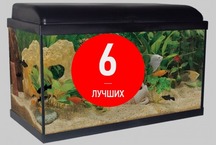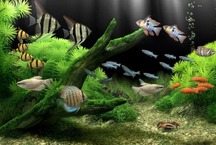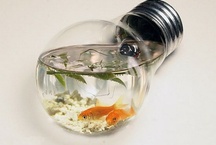5 best soils for aquarium
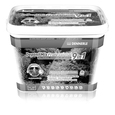
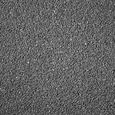



Beginners often underestimate the role of the soil in the aquarium, believing that this is just another decorative element. However, his role is truly colossal. Here it is worth remembering that an aquarium is an imitation of a natural pond, which means that a lot of processes that are imperceptible to our eyes occur in it.
So, why do we need ground at all? In addition to the aesthetic, it performs the following functions:
- is the habitat of some fish and other organisms;
- serves as a substrate for fixing the roots of aquatic plants;
- performs a biological role.
On the last paragraph we will dwell in more detail. The fact is that particles of good soil have a porous surface, which is gradually colonized by good bacteria. Similar processes occur in biological fillers for filters. Excretions of fish and other animals along with food particles and plant residues fall to the bottom, where they begin to decompose with the release of toxic substances — ammonia and ammonium, which literally poison the water. The beneficial bacteria recycle these poisons, neutralize them, and thereby purify the water. Even the constant replacement of water is not able to completely cope with this. Therefore, without a good ground, it is simply impossible to create a normal ecosystem in an aquarium.
The choice of the best soil depends primarily on the plants and fish that inhabit the aquarium. There are natural and artificial soils, as well as neutral, not affecting the chemical composition of water, and nutritious.
| Category | A place | Name | Rating | Price |
|---|---|---|---|---|
| Top soils for standard aquariums | 1 | Sand and gravel | 9.9 / 10 | 300 |
| 2 | Processed natural soil | 9.7 / 10 | 850 | |
| The best grounds for an aquarium with a lot of plants | 1 | Nutrient mixtures | 9.6 / 10 | 4 000 |
| 2 | Deponit (Susbtrat) | 9.6 / 10 | 1 560 | |
| The best soil for a cichlid aquarium and pseudomorya | 1 | Coral baby | 9.4 / 10 | 250 |
Top soils for standard aquariums
|
Sand and gravel
300 (approximate cost per bag 6 kg)
Chemically neutral soils are the most common for conventional aquariums, populated with undemanding plants and fish. They are suitable for most species, are a good substrate for beneficial bacteria and perfectly perform a biological function. The particle size of sand should be 1.5-2 mm, gravel - 3-5 mm. It is better if all the particles are more or less the same - this will prevent caking. It is better to choose rounded stones, since sharp corners are traumatic for bottom inhabitants. You should not expect a violent growth of plants in such a ground: they can receive nutrients only from fertilizers dissolved in water, or after silting the bottom, many months after starting.
Main advantages:
Minuses:
|
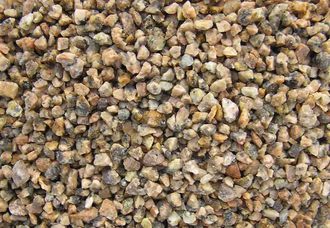 9.9 / 10
Rating
Reviews
I don’t see any problems, my aquarium has been standing with gravel for many years. Naturally looks. Cheap. Easy to clean, dirt is not too visible. |
|
Processed natural soil
850 (for a package of 5 liters of soil Manado (JBL))
The baked clay soil is completely neutral and natural. Rounded particles can not damage the fish. The porous structure is ideal for colonization by beneficial bacteria. In addition, expanded clay is a natural adsorbent that takes excess fertilizer and organic matter from water, thereby preventing the growth of algae. The special structure prevents caking and has a good effect on the growth of stones.
Main advantages:
Minuses:
|
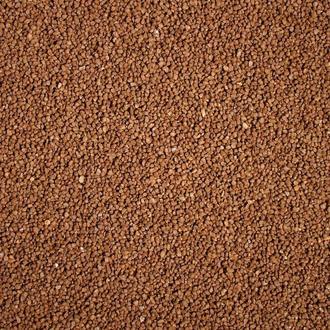 9.7 / 10
Rating
Reviews
It looks very natural and due to its porous structure, the roots are better washed with water. But empty - the necessary nutritional substrate. |
The best grounds for an aquarium with a lot of plants
|
Nutrient mixtures
4 000 (per bag 6 kg Power Sand Special M from ADA)
Nutrient mixtures are ideal for growing aquarium plants, creating a Dutch or nano-aquarium. As a rule, they include peat, mineral fertilizers, porous material, as well as beneficial bacteria. Such a soil will provide not only a good biological purification of water, but also stimulate the growth of plants for a long time. Many of them also act as an excellent food base for shrimp, which is why they are often used in shrimps.
Main advantages:
Minuses:
|
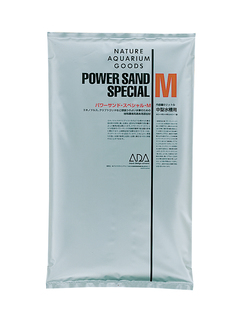 9.6 / 10
Rating
Reviews
Soil is good for rastyuchki, but heavy. It cannot be siphoned, some granules break up over time and form brown dust that falls on mosses, and it is problematic to clean it. |
|
Deponit (Susbtrat)
1 560 (for a bucket of 4.8 kg DeponitMix (Dennerle))
Special nutritional mixtures contain a lot of active organic and mineral substances that stimulate the growth of plants. They are not used in pure form, but as a substrate mixed with another, neutral, primer. Usually they contain granules of both soluble substances and fertilizers of prolonged action, as well as porous elements and a large number of live, beneficial bacteria. Instructions for preparing the mixture for each manufacturer is special. Some companies recommend using a heat cable at the bottom to improve water circulation.
Main advantages:
Minuses:
|
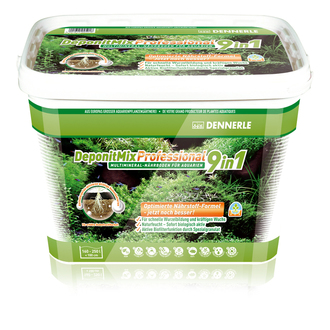 9.6 / 10
Rating
Reviews
I now have 2 aquariums on Deponita, with and without cable, no problems and difficulties with the launch and subsequent maintenance. One of the best soils for the aquarium, but, as practice has shown, Deponit is not a panacea, as it did not grow in freshly-launched banks, it does not grow. |
The best soil for a cichlid aquarium and pseudomorya
|
Coral baby
250 (approximate price for 1 kg)
Coral baby is a beautiful white decorative ground. Because of its chemical activity, it is not suitable for all types of aquariums, as it makes the water noticeably tougher. Used mainly in pseudo-sea aquariums or tsikhlidnikah. It happens as small, like sand, and a larger fraction.
Main advantages:
Minuses:
|
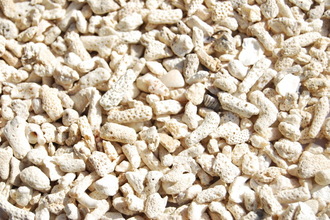 9.4 / 10
Rating
Reviews
Chose between quartz grains and coral chips. Quartz gives a gray. Baby is much brighter and whiter, increases stiffness. I only had theodoxuses with a crumb to feel and multiply. |
What is the best soil for an aquarium?
The best soil is the one that suits the inhabitants of your aquarium. Only having decided on inhabitants who will be settled in an aquarium, it is possible to pick up the corresponding soil. Take the choice responsibly, because it may depend on the health of all plants and fish.
Do not choose brightly colored soils of unknown origin that have a chemical smell. Such beautiful pebbles can be a real poison. Glass balls and sea rounded pebbles also do not fit: their smooth surface is not suitable for colonization by bacteria.
Large stones should not be used for fish that have a habit of digging or digging. In addition, remnants of food will fall into large gaps between them, which over time will begin to accumulate there and rot. Fine sand is also better to use only for decorative purposes, as it will clog and sour below without oxygen.
It is wise to approach to the acquisition of chemically active materials, such as coral sand or marble chips. They may contain components of lime, strongly affecting the pH of the water, and therefore not suitable for keeping most fish. Most often, beginners try to use neutral natural soils, but they can also contain inclusions of chemically active substances. It is very simple to check the safety of stones - it is enough to see if they give a chemical reaction with 70% acetic acid. The formation of gas bubbles and hissing suggests that such a soil is not neutral and will not work for all types of aquariums.
And finally, it is best to purchase the soil in proven pet shops, so that it is packed in bags with the manufacturer's name (it’s better not to choose nameless Chinese companies, but well-known ones that produce aquarium equipment) - this will guarantee its safety and environmental friendliness.
